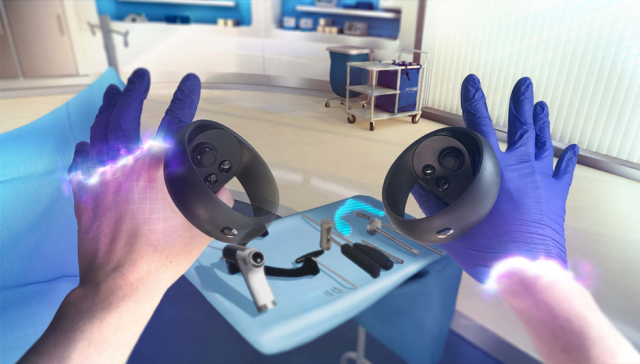
Utilising VR for medical training is one area that caught my attention. Currently medical school is one of the costliest trainings costing more than SGD833,000 in the NUS Yong Loo Lin School of Medicine. Compared to an engineering degree which cost SDG206,000.
What is Osso VR?
Osso VR is a start-up founded in 2016 that primarily develops a VR training platform for surgical process training in the medical field. The company’s goal is to provide surgical training to medical staff and students reducing the constraints and limitations such as cost, location, and time.
Osso VR utilises both the virtual reality element to construct a surgical room with the goal of providing an accurate surgical environment complete with tools and patients for medical personal to go test their surgical processes and skills without risking a real person’s life and without the need for cost of equipment and time to set up a surgical room. The company’s solution also integrated a metaverse aspect allowing other medical personnel to join the room and observe or assist the head surgeon allowing practice for the full surgical team and allowing onlookers to observe the process.
Why is it engaging?
Osso VR is engaging as not only does it simulate a medical environment to immerse the user into the setting, but it can be complete with medical tools found in a fully prepared surgical room which the user can interact with and a virtual patient the user can conduct surgery on with the provided medical tools. The solution also enables other members to join in the virtual environment where the users can interact with one another to involve the users in a group level surgical process.
The metaverse feature which allows different users to join the session allows for a new form of remote engagement by medical experts to guide students or trainees which further enhances the training experience through interpersonal engagement.
What features are well done?
The surgical tools introduce in the software are accurate to that of the surgical ward with great animations and illustrations of their operating process giving detail of the process that allows someone as unfamiliar to the surgical process such as myself to understand the process.
What features can be improved and how?
One main disadvantage of the solution is utilizing oculus hand controllers to tract hand movement and using the device to pick up and operate the various surgical tools which is inaccurate as the operating process of the tool is different in terms of ergonomics and interaction as compared to pressing buttons on the oculus controller.
A potential solution could be to integrate hand-tracking tools to track the hand gestures and hand movement to be recreated in the virtual environment which would familiarize the user on interacting with the surgical tools.
My Conclusion
Overall, the software is extremely creative providing outstanding interaction and engagement which allows the user to experience a close to real-world experience at a lower cost, less time required to set up, and accessibility as the user can access the training room from anywhere in the world with a good network. Additionally, this solution allows users to have certain engaging features such as assessments to allow evaluations without the need for a human evaluator and the process is easily repeatable even by one user himself. This tool will prove important to advancing the training in the medical industry and make the training more widely available and accessible.
